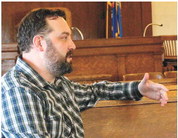Questions and answers about snowmobiling in Wisconsin


I can probably guess that if you live in Taylor County or in any part of Wisconsin, that you know what a snowmobile and a snowmobile trail are. But do you know what kind of proble...



